 W
WThis is a list of wars involving the Socialist Republic of Vietnam and its predecessor states.
 W
WThe Anarchy of the 12 Warlords, also the Period of the 12 Warlords, was a period of chaos and civil war in the history of Vietnam, from 944 to 968 caused by the succession of the Ngô Dynasty after the death of King Ngô Quyền. This period is also sometimes simply called the Twelve Warlords.
 W
WThe Cambodian Civil War was a civil war in Cambodia fought between the forces of the Communist Party of Kampuchea against the government forces of the Kingdom of Cambodia and, after October 1970, the Khmer Republic, which had succeeded the kingdom.
 W
WThe Cambodian–Vietnamese War, known in Vietnam as the Counter-offensive on the Southwestern border, and by Cambodian nationalists as the Vietnamese invasion of Cambodia, was an armed conflict between Democratic Kampuchea, controlled by the Khmer Rouge, and the Socialist Republic of Vietnam. The war began with repeated attacks by the Kampuchean Revolutionary Army on the southwestern border of Vietnam, particularly the Ba Chuc massacre which resulted in the deaths of over 3,000 Vietnamese civilians. On 25 December 1978, Vietnam launched a full-scale invasion of Kampuchea, and subsequently occupied the country and removed the government of the Communist Party of Kampuchea from power.
 W
WThe Cần Vương movement was a large-scale Vietnamese insurgency between 1885 and 1889 against French colonial rule. Its objective was to expel the French and install the boy emperor Hàm Nghi as the leader of an independent Vietnam. The movement lacked a coherent national structure and consisted mainly of regional leaders who attacked French troops in their own provinces. The movement initially prospered as there were only a few French garrisons in Annam, but failed after the French recovered from the surprise of the insurgency and poured troops into Annam from bases in Tonkin and Cochinchina. The insurrection in Annam spread and flourished in 1886, reached its climax the following year and gradually faded out by 1889.
 W
WThe Đại Việt–Khmer Wars were a series of wars fought between the kingdom of Đại Việt and the Khmer Empire between 1123 and 1150.
 W
WThe First Indochina War began in French Indochina on December 19, 1946, and lasted until July 20, 1954. Fighting between French forces and their Việt Minh opponents in the south dated from September 1945. The conflict pitted a range of forces, including the French Union's French Far East Expeditionary Corps, led by France and supported by Bảo Đại's Vietnamese National Army against the Việt Minh, led by Hồ Chí Minh and the People's Army of Vietnam led by Võ Nguyên Giáp. Most of the fighting took place in Tonkin in northern Vietnam, although the conflict engulfed the entire country and also extended into the neighboring French Indochina protectorates of Laos and Cambodia.
 W
WThe fourth Chinese domination was a period of the history of Vietnam, from 1407 to 1427 during which the country was invaded and ruled by the Chinese Ming dynasty. It was the result of the conquest of the region in 1406 to 1407. The previous periods of Chinese rules, collectively known as the Bắc thuộc periods in Vietnam, were longer-lasting, constituting much of Vietnam's history from 111 BC to 939 AD. The fourth Chinese occupation of Vietnam was eventually ended with the establishment of the Lê dynasty.
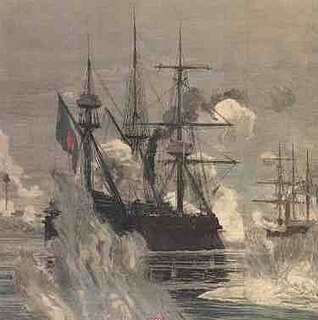 W
WThe Franco-Siamese War of 1893 was a conflict between the French Third Republic and the Kingdom of Siam. Auguste Pavie, French vice consul in Luang Prabang in 1886, was the chief agent in furthering French interests in Laos. His intrigues, which took advantage of Siamese weakness in the region and periodic invasions by Vietnamese rebels from Tonkin, increased tensions between Bangkok and Paris. Following the conflict, the Siamese agreed to cede Laos to France, an act that led to the significant expansion of French Indochina.
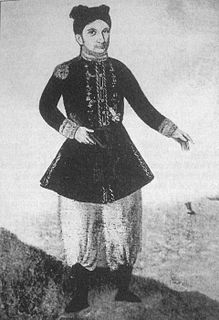 W
WFrench assistance to Nguyễn Phúc Ánh, the future Emperor of Vietnam and the founder of the Nguyễn Dynasty, covered a period from 1777 to 1820. From 1777, Mgr Pigneau de Behaine, of the Paris Foreign Missions Society, had taken to protecting the young Vietnamese prince who was fleeing from the offensive of the Tây Sơn. Pigneau de Behaine went to France to obtain military aid, and secured a France-Vietnam alliance that was signed through the 1787 Treaty of Versailles between the king of France, Louis XVI, and Prince Nguyễn Phúc Ánh. As the French regime was under considerable strain at the eve of the French Revolution, France was unable to follow through with the application of the treaty. However, Mgr Pigneau de Behaine persisted in his efforts and, with the support of French individuals and traders, mounted a force of French soldiers and officers that would contribute to the modernization of the armies of Nguyễn Ánh, making possible his victory and his reconquest of all of Vietnam by 1802. A few French officers would remain in Vietnam after the victory, becoming prominent mandarins. The last of them left in 1824 following the enthronement of Minh Mạng, Gia Long's successor. The terms of the 1787 Treaty of Alliance would still remain one of the justifications of French forces when they demanded the remittance of Đà Nẵng in 1847.
 W
WThe Haiphong Incident or the Haiphong Massacre occurred on November 23, 1946, when the French cruiser Suffren bombarded the Vietnamese coastal city of Haiphong, killing some 6,000 Vietnamese people. The incident, also known as the Shelling of Haiphong, is thought of as the first armed clash in a series of events that would lead to the Battle of Hanoi on December 19, 1946, and with it the official outbreak of the First Indochina War.
 W
WThe Han conquest of Nanyue was a military conflict between the Han empire and the Nanyue kingdom in modern Guangdong, Guangxi, and Northern Vietnam. During the reign of Emperor Wu, the Han forces launched a punitive campaign against Nanyue and conquered it in 111 BC.
 W
WThe Haw Wars were fought against Chinese quasi-military forces invading parts of Tonkin and the Siam from 1865–1890. Forces invading Lao domains were ill-disciplined and freely plundered Buddhist temples. Not knowing these were remnants of the aftermath of the Taiping Rebellion led by Hong Xiuquan, a heterodox Christian convert, the invaders were confused with Chinese Muslims from Yunnan called Haw. Forces sent by King Rama V failed to suppress the various groups, the last of which eventually disbanded in 1890.
 W
WThe Franco-Thai War (1940–1941) was fought between Thailand and Vichy France over certain areas of French Indochina.
 W
WThe Japanese invasion of French Indochina was a short undeclared military confrontation between Japan and France in northern French Indochina. Fighting lasted from 22 to 26 September 1940, simultaneous with the Battle of South Guangxi in the Sino-Japanese War.
 W
WThis is a list of campaigns of Kublai Khan, founder of the Yuan dynasty.
 W
WThe Lam Sơn uprising was the uprising led by Lê Lợi in Vietnam of 1418–1427 against Ming rule.
 W
WThe Lao rebellion, also known as Anouvong's Rebellion or Lao–Siamese War, was an attempt by King Anouvong of the Kingdom of Vientiane to end the suzerainty of Siam and recreate the former kingdom of Lan Xang. In January 1827 the Lao armies of the kingdoms of Vientiane and Champasak moved south and west across the Khorat Plateau, advancing as far as Saraburi, just three days march from the Siamese capitol of Bangkok. The Siamese quickly mounted a counterattack, forcing the Lao forces to retreat. The Siamese continued north to defeat Anouvong's army. His rebellion had failed, which led to his capture, the destruction of his city of Vientiane in retaliation, a massive resettlement of Lao people to the west bank of the Mekong River, and direct Siamese administration of the former territories of the Kingdom of Vientiane. The rebellion was a watershed moment in the history of Southeast Asia, as it further weakened the small Lao kingdoms, perpetuated conflict between Siam and Vietnam and ultimately facilitated French involvement in Indochina in the latter half of the nineteenth century. The legacy of the Lao rebellion is controversial. It is viewed in Thailand as a ruthless and daring rebellion that had to be suppressed, and has given rise to the folk heroes such as Thao Suranari and Chao Phaya Lae. In Laos, King Anouvong is now revered as a national hero who died in pursuit of complete independence, even though he both lost his life in an ill-advised revolt against heavy odds and virtually guaranteed that the Lao-speaking provinces across the Mekong River would remain as part of Siam.
 W
WThe Laotian Civil War (1959–1975) was a civil war in Laos fought between the Communist Pathet Lao and the Royal Lao Government from 23 May 1959 to 2 December 1975. It is associated with the Cambodian Civil War and the Vietnam War, with both sides receiving heavy external support in a proxy war between the global Cold War superpowers. It is called the Secret War among the CIA Special Activities Center and Hmong veterans of the conflict.
 W
WThe Vietnamese-Laotian War of 1479–80, also known as the White Elephant War, was a relatively short conflict between the Laotian mandala of Lan Xang and the Vietnamese state of Đại Việt. The war and its aftermath contributed significantly to the formation of Laos.
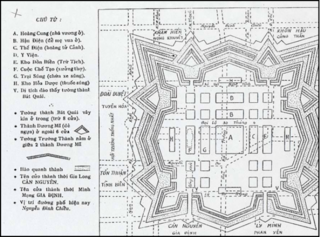 W
WThe Lê Văn Khôi revolt was an important revolt in 19th-century Vietnam, in which southern Vietnamese, Vietnamese Catholics, French Catholic missionaries and Chinese settlers under the leadership of Lê Văn Khôi opposed the Imperial rule of Emperor Minh Mạng.
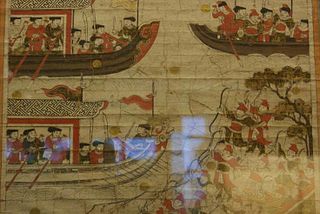 W
WThe Lê–Mạc War was a long-time civil war waged between two Vietnamese dynasties, the Mạc and Revival Lê, during the Southern and Northern Dynasties period of Vietnamese history.
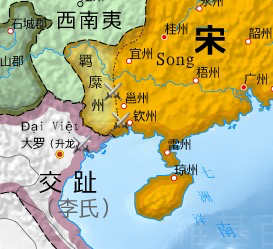 W
WThe Lý–Song War was a significant war fought between the kingdom of Đại Việt under the house of Lý and the Song dynasty of China between 1075 and 1077. The war began in 1075 when the Vietnamese king ordered a preemptive invasion of the Song dynasty using more than 80,000 soldiers, where Đại Việt's forces defeated the Song army and razed the city of Yongzhou to the ground after a forty-two day siege. In response, in 1076 the Song led an army of over 300,000 to invade Đại Việt and by 1077 nearly reached Thăng Long, the capital of Đại Việt, before being halted by general Lý Thường Kiệt at the Nhu Nguyệt River in modern Bắc Ninh Province. After a long battle at the river with high casualties on both sides, Lý Thường Kiệt offered peace to the Song, and the Song commander Guo Kui agreed to withdraw his troops, ending the war.
 W
WThe Mongol invasion of Java was a military effort made by Kublai Khan, founder of the Yuan dynasty, to invade Java, an island in modern Indonesia. In 1293, he sent a large invasion fleet to Java with 20,000 to 30,000 soldiers. This was a punitive expedition against King Kertanegara of Singhasari, who had refused to pay tribute to the Yuan and maimed one of its ministers. However, it ended with failure for the Mongols and victory for Singhasari.
 W
WThe Mongol invasions of Vietnam or Mongol-Vietnamese Wars refer to the military campaigns launched by the Mongol Empire, and later the Yuan dynasty, against the kingdom of Đại Việt ruling by Trần dynasty and the Champa in 1258, 1282–1284, 1285, and 1287–88. In studies of China and Mongolia, the campaigns are often treated as a success due to the establishment of tributary relations with Đại Việt despite the Mongols suffering several military defeats. In contrast, Vietnamese historiography emphasizes the Dai Viet military victories.
 W
WThe Battle of Ngọc Hồi-Đống Đa, also known as Victory of Kỷ Dậu, was fought between the forces of the Tây Sơn dynasty of Vietnam and the Qing dynasty of China in Ngọc Hồi and Đống Đa in northern Vietnam from 1788 to 1789. It is considered one of the greatest victories in Vietnamese military history.
 W
WThe People's Republic of Kampuchea, also referred to as the Vietnamese occupation of Cambodia, was founded in Cambodia by the Salvation Front, a group of Cambodian communists dissatisfied with the Khmer Rouge after the overthrow of Democratic Kampuchea, Pol Pot's government. Brought about by an invasion from Vietnam, which routed the Khmer Rouge armies, it had Vietnam and the Soviet Union as its main allies.
 W
WIn Vietnam history, the second Chinese domination marks the period from the 1st century to 6th century AD when present-day northern Vietnam (Jiaozhi) was governed by various Chinese dynasties. This period began when Han dynasty reconquered Giao Chỉ (Jiaozhi) from the Trưng Sisters and ended in 544 AD when Lý Bí revolted against the Liang dynasty and established the Early Lý dynasty. This period lasted about 500 years.
 W
WThe Siamese-Vietnamese War of 1831–1834, also known as the Siamese-Cambodian War of 1831–1834, was sparked by a Siamese invasion force under general Bodindecha, attempting to conquer Cambodia and Southern Vietnam. After initial success and the defeat of the Khmer army at the 1832 Battle of Kompong Cham, in 1833 the Siamese advance was repelled in South Vietnam by the forces of the Nguyen Dynasty. Upon the outbreak of a general uprising in Cambodia the Siamese army withdrew and Vietnam was left in control of Cambodia.
 W
WThe 1841–1845 Siamese-Vietnamese War in Cambodia was a military conflict between Đại Nam (Vietnam), ruled by the Nguyen emperor Thiệu Trị and the Kingdom of Siam under the rule of Chakkri king Nangklao. The rivalry between Vietnam and Siam over the control of the Cambodian heartlands in the Lower Mekong basin had intensified after Siam's failed attempt to conquer Cambodia during the previous war from 1831 until 1834. Nguyen Emperor Minh Mạng installed Princess Ang Mey to rule Cambodia as puppet queen regnant of his choice in 1834, declaring full suzerainty over Cambodia, which he thereby demoted to become Vietnam's thirty-second province, the Western Commandery. In 1841 Siam seized the opportunity of discontent and a Khmer revolt against Vietnamese rule and King Rama III sent an army to enforce Prince Ang Duong's installation as King of Cambodia. After four years of attritional struggle, both parties agreed to a compromise peace and placed Cambodia under joint rule.
 W
WThe Siamese–Vietnamese wars were a series of armed conflicts between the Siamese Ayutthaya Kingdom and Rattanakosin Kingdom and the various dynasties of Vietnam mainly during the 18th and 19th centuries. Several of the wars took place in modern-day Cambodia.
 W
WThe Sino-French War, also known as the Tonkin War and Tonquin War, was a limited conflict fought from August 1884 through April 1885. There was no declaration of war. Militarily it was a stalemate. The Chinese armies performed better than in other nineteenth-century wars and the war ended with French retreat on land. However, one consequence was that France supplanted China's control of Tonkin. The war strengthened the dominance of Empress Dowager Cixi over the Chinese government, but brought down the government of Prime Minister Jules Ferry in Paris. Both sides were satisfied with the Treaty of Tientsin. According to Lloyd Eastman, "neither nation reaped diplomatic gains."
 W
WThe Sino-Vietnamese conflicts of 1979–1991 were a series of border and naval clashes between the People's Republic of China and the Socialist Republic of Vietnam following the Sino-Vietnamese War in 1979. These clashes lasted from the end of the Sino-Vietnamese War until the normalization of ties in 1991.
 W
WThe Sino-Vietnamese War was a border war fought between the People's Republic of China and the Socialist Republic of Vietnam in early 1979. China launched an offensive in response to Vietnam's invasion and occupation of Cambodia in 1978.
 W
WIn the Vietnam War, after the assassinations of Ngo Dinh Diem and John F. Kennedy in late 1963 and the Gulf of Tonkin incident in 1964 and the continuing political instability in the South, the United States made a policy commitment to begin joint warfare in South Vietnam, a period of gradual escalation and Americanization, involving the commitment of large-scale combat forces from the United States and allied countries. It was no longer assumed the Republic of Vietnam could create a desirable situation without major external assistance. This phase of the war lasted until the election of Richard Nixon, and the change of U.S. policy to Vietnamization, or giving the main combat role back to the South Vietnamese military.
 W
WThe Thái Nguyên uprising in 1917 has been described as the "largest and most destructive" anti-colonial rebellion in French Indochina between the Pacification of Tonkin in the 1880s and the Nghe-Tinh Revolt of 1930–31. On 30 August 1917, an eclectic band of political prisoners, common criminals and insubordinate prison guards mutinied at the Thai Nguyen Penitentiary, the largest one in the region. The rebels came from over thirty provinces and according to estimates, involved at some point roughly 300 civilians, 200 ex-prisoners and 130 prison guards.
 W
WThe Thai–Laotian Border War was a short confrontation between Thai and Laotian forces. It involved a dispute over the map made by French surveyors in 1907 to mark the borders between Siam and French Indochina in the southern Luang Prabang Range. Ownership of the village of Ban Romklao on the border of Phitsanulok Province and three small border villages on the edge of Uttaradit Province was left unclear. This is the same map underlying the Cambodian–Thai border dispute. The agreed criterion for determining ownership was the natural watershed, but the French map makers at times ignored this.
 W
WThe third Chinese domination is the period in Vietnam from the end of the Early Lý dynasty in 602 to the rise of the Khúc family by Khúc Thừa Dụ in 905. Its independence was consolidated in 938, following the Battle of Bạch Đằng and expulsion of the Southern Han army by Ngô Quyền who established the Ngô dynasty. This period saw two Chinese imperial dynasties rule over an area of northern Vietnam roughly corresponding to the modern Hanoi region. From 602–618, this area was under the late Sui Dynasty, under three districts in the Red River Delta. From 618 to 905, the Tang Dynasty became the new Chinese rulers of Vietnam.This began when the king of Early Lý dynasty surrendered to Emperor Wen of Sui in Sui–Former Lý War until Khúc clan seized the capital Đại La and install the autonomous state in Vietnam in 905. At that moment, the Emperor Ai of Tang lost the power to Zhu Wen and stayed as the figurehead.
 W
WThe Tonkin campaign was an armed conflict fought between June 1883 and April 1886 by the French against, variously, the Vietnamese, Liu Yongfu's Black Flag Army and the Chinese Guangxi and Yunnan armies to occupy Tonkin and entrench a French protectorate there. The campaign, complicated in August 1884 by the outbreak of the Sino-French War and in July 1885 by the Cần Vương nationalist uprising in Annam, which required the diversion of large numbers of French troops, was conducted by the Tonkin Expeditionary Corps, supported by the gunboats of the Tonkin Flotilla. The campaign officially ended in April 1886, when the expeditionary corps was reduced in size to a division of occupation, but Tonkin was not effectively pacified until 1896.
 W
WThe Treaty of Tientsin, signed on June 9th, 1885, officially ended the Sino-French War. The unequal treaty restated in greater detail the main provisions of the Tientsin Accord, signed between France and China on May 11th, 1884. As Article 2 required China to recognize the French protectorate over Annam and Tonkin established by the Treaty of Hue in June 1884, which implicitly forced China to abandon its claims to suzerainty over Vietnam, the treaty formalized France's diplomatic victory in the Sino-French War.
 W
WThe Trịnh–Nguyễn Civil War was a long war waged between the two ruling families in Vietnam.
 W
WAt the outbreak of World War I, Vietnam was under French protectorate and part of French Indochina. While seeking to maximize the use of Indochina's natural resources and manpower to fight the war, France cracked down all patriotic movements in Vietnam. As the country remained a member of the French Empire, many Vietnamese fought later in the conflict.
 W
WThe Vietnam War, also known as the Second Indochina War, and in Vietnam as the Resistance War Against America or simply the American War, was a conflict in Vietnam, Laos, and Cambodia from 1 November 1955 to the fall of Saigon on 30 April 1975. It was the second of the Indochina Wars and was officially fought between North Vietnam and South Vietnam. North Vietnam was supported by the Soviet Union, China, and other communist allies; South Vietnam was supported by the United States, South Korea, the Philippines, Australia, Thailand, and other anti-communist allies. The war, considered a Cold War-era proxy war by some, lasted 19 years, with direct U.S. involvement ending in 1973, and included the Laotian Civil War and the Cambodian Civil War, which ended with all three countries becoming communist in 1975.
 W
WThe 1954 to 1959 phase of the Vietnam War was the era of the two nations. Coming after the First Indochina War, this period resulted in the military defeat of the French, a 1954 Geneva meeting that partitioned Vietnam into North and South, and the French withdrawal from Vietnam, leaving the Republic of Vietnam regime fighting a communist insurgency with USA aid. During this period, North Vietnam recovered from the wounds of war, rebuilt nationally, and accrued to prepare for the anticipated war. In South Vietnam, Ngô Đình Diệm consolidated power and encouraged anti-communism. This period was marked by U.S. support to South Vietnam before Gulf of Tonkin, as well as communist infrastructure-building.
 W
WThe War in Vietnam, codenamed Operation Masterdom by the British, and also known as Nam Bộ kháng chiến by the Vietnamese, was a post–World War II armed conflict involving a largely British-Indian and French task force and Japanese troops from the Southern Expeditionary Army Group, versus the Vietnamese communist movement, the Viet Minh, for control of the southern half of the country, after the unconditional Japanese surrender.
 W
WThe 1959 to 1963 phase of the Vietnam War started after the North Vietnamese had made a firm decision to commit to a military intervention in the guerrilla war in the South Vietnam, a buildup phase began, between the 1959 North Vietnamese decision and the Gulf of Tonkin Incident, which led to a major US escalation of its involvement. Vietnamese communists saw this as a second phase of their revolution, the US now substituting for the French.
 W
WIn the northern-hemisphere summer of 1940 Germany rapidly defeated the French Third Republic, and colonial administration of French Indochina passed to the French State. In September 1940 Japanese troops first entered parts of Indochina; and in July 1941 Japan extended its control over the whole of French Indochina. The United States, concerned by Japanese expansion, started putting embargoes on exports of steel and oil to Japan from July 1940. The desire to escape these embargoes and to become self-sufficient in resources ultimately contributed to Japan's decision to attack on December 7, 1941 the British Empire and simultaneously the USA and at Pearl Harbor, Hawaii). This led to the USA declaring war against Japan on December 8, 1941. The US then joined the British Empire, already at war with Germany since 1939, and its existing allies in the fight against the Axis powers.
 W
WIn the northern-hemisphere summer of 1940 Germany rapidly defeated the French Third Republic, and colonial administration of French Indochina passed to the French State. In September 1940 Japanese troops first entered parts of Indochina; and in July 1941 Japan extended its control over the whole of French Indochina. The United States, concerned by Japanese expansion, started putting embargoes on exports of steel and oil to Japan from July 1940. The desire to escape these embargoes and to become self-sufficient in resources ultimately contributed to Japan's decision to attack on December 7, 1941 the British Empire and simultaneously the USA and at Pearl Harbor, Hawaii). This led to the USA declaring war against Japan on December 8, 1941. The US then joined the British Empire, already at war with Germany since 1939, and its existing allies in the fight against the Axis powers.
 W
WWorld War II, also known as the Second World War, was a global war that lasted from 1939 to 1945. It involved the vast majority of the world's countries—including all the great powers—forming two opposing military alliances: the Allies and the Axis. In a state of total war, directly involving more than 100 million people from more than 30 countries, the major participants threw their entire economic, industrial, and scientific capabilities behind the war effort, blurring the distinction between civilian and military resources. World War II was the deadliest conflict in human history, marked by 70 to 85 million fatalities. Tens of millions of people died due to genocides, premeditated death from starvation, massacres, and disease. Aircraft played a major role in the conflict, including in the use of strategic bombing of population centres, and the only uses of nuclear weapons in war.
 W
WThe Yên Bái mutiny was an uprising of Vietnamese soldiers in the French colonial army on 10 February 1930 in collaboration with civilian supporters who were members of the Việt Nam Quốc Dân Đảng.
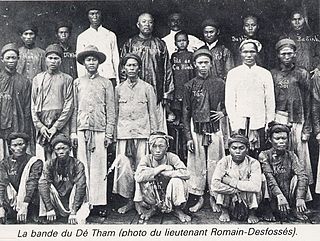 W
WThe Yên Thế Insurrection was a 25-year-long popular revolt in Yên Thế District, Vietnam, against French rule and in defiance of the Nguyễn dynasty's collaborative stance.